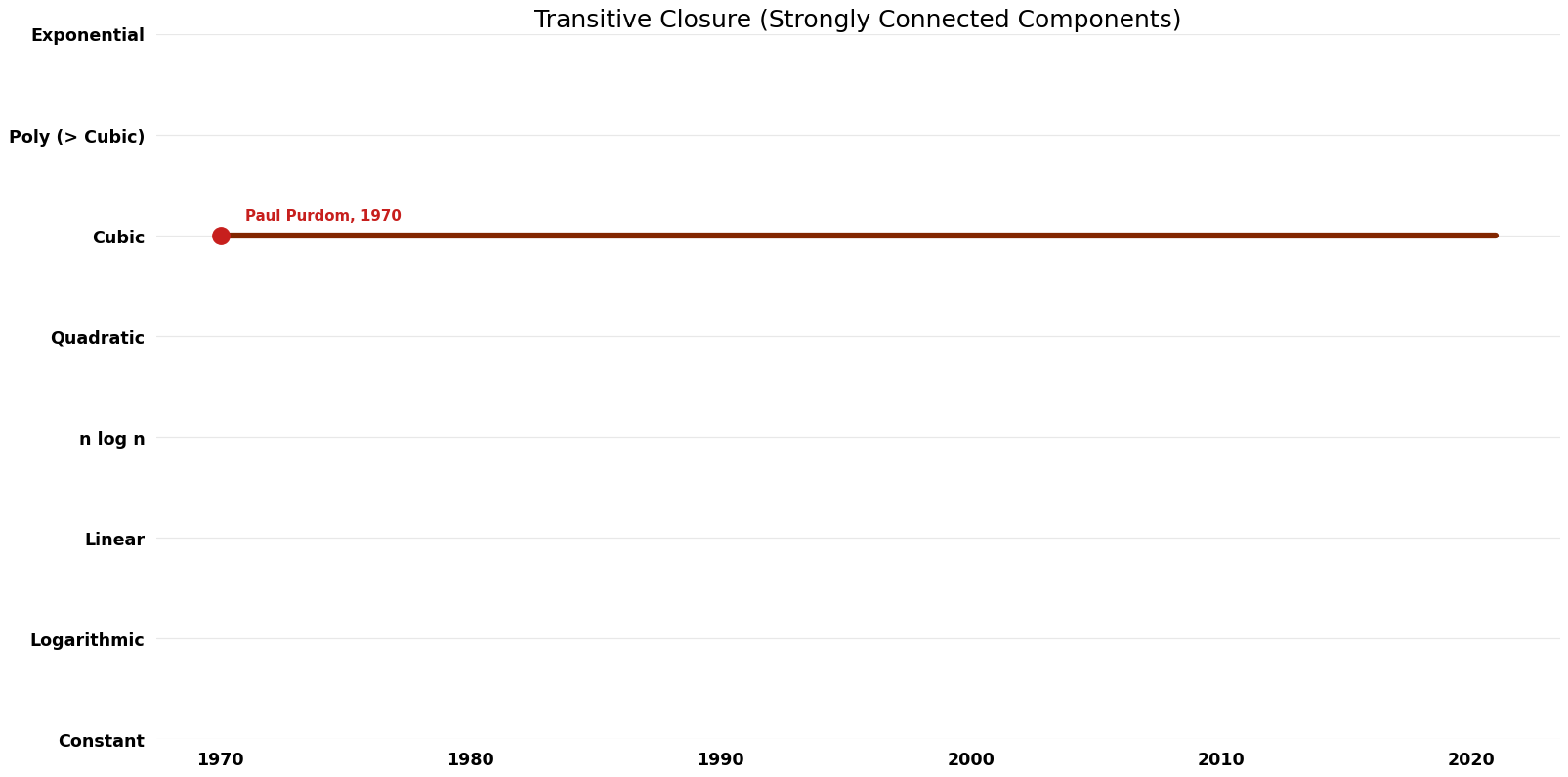Transitive Closure: Difference between revisions
Jump to navigation
Jump to search
No edit summary |
No edit summary |
||
| Line 26: | Line 26: | ||
|} | |} | ||
== Time Complexity | == Time Complexity Graph == | ||
[[File:Strongly Connected Components - Transitive Closure - Time.png|1000px]] | [[File:Strongly Connected Components - Transitive Closure - Time.png|1000px]] | ||
== Space Complexity | == Space Complexity Graph == | ||
[[File:Strongly Connected Components - Transitive Closure - Space.png|1000px]] | [[File:Strongly Connected Components - Transitive Closure - Space.png|1000px]] | ||
== Pareto | == Pareto Frontier Improvements Graph == | ||
[[File:Strongly Connected Components - Transitive Closure - Pareto Frontier.png|1000px]] | [[File:Strongly Connected Components - Transitive Closure - Pareto Frontier.png|1000px]] | ||
Revision as of 14:04, 15 February 2023
Description
In this problem, we also want to compute the transitive closure of a graph. (Perhaps this should be a separate problem?)
Related Problems
Related: Strongly Connected Components, Maximum Strongly Connected Component, Strong Connectivity (dynamic), 2 Strong Components (dynamic), Connected Subgraph
Parameters
V: number of vertices
E: number of edges
Table of Algorithms
| Name | Year | Time | Space | Approximation Factor | Model | Reference |
|---|---|---|---|---|---|---|
| Paul Purdom | 1970 | $O(V^{2}+VE)$ | $O(V^{2})$ | Exact | Deterministic | Time & Space |


